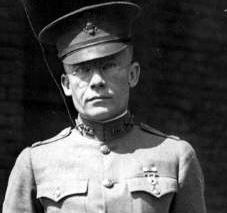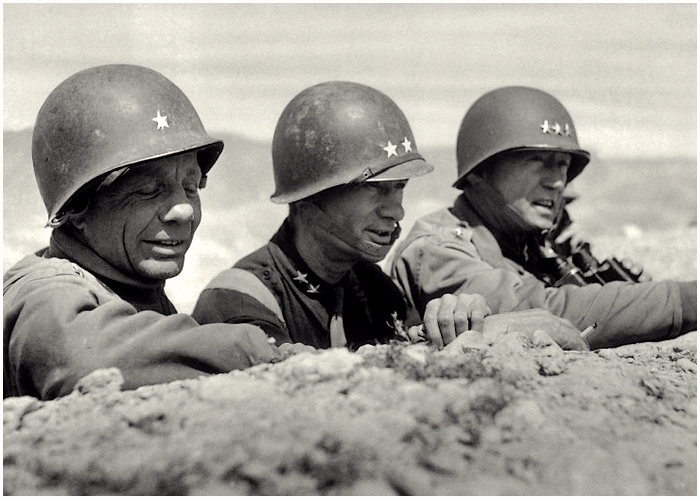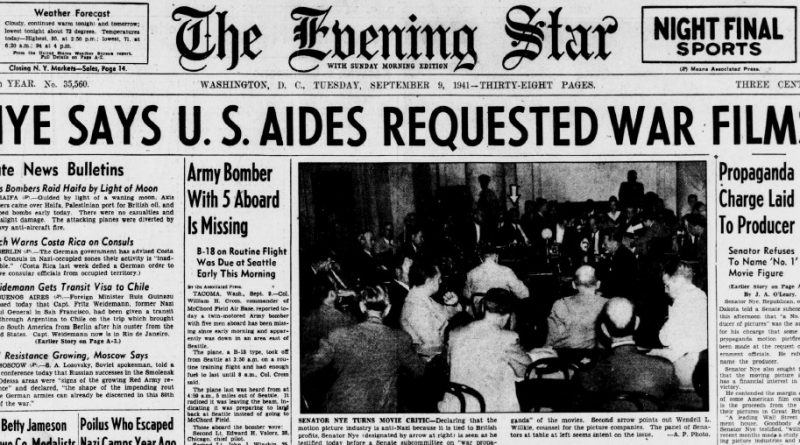World War II Chronicle: September 9, 1941
Click here for today’s newspaper
Today’s front page features a harrowing account of an American passenger crossing the Atlantic while being hunted by a German submarine, and names the four American airmen killed when the unescorted British merchant vessel SS Fort Richepanse was torpedoed and sunk by the German U-boat U-567 400 miles west of Ireland on September 3. Pilot Officers John R. Cox, 26 years old; Frank J. Kruszinsky, 27, from Brooklyn, N.Y.; Harry H. Hay, 37; and William M. Bishop, 23, all conducted flight training in Canada for service in the Royal Air Force Volunteer Reserve. The vessel that carried them halfway across the Atlantic belonged to France until its capture by the Royal Navy in February…
Also on the front page, an Army B-18A bomber has gone missing during an early morning training mission in Washington state. Among the missing is Pvt. Milford Knight from St. Louis, who is not mentioned in the article. The story continues to develop over the next few days, and you can see the crew’s fate here…

One of the eight Army officers picked for promotion to colonel (see page three) is Clift Andrus, currently commanding the 24th Infantry Division’s artillery. In fact, his artillerymen were among the first U.S. ground forces to return fire against the Japanese during their attack on Pearl Harbor; 24th Division guns were up and firing within 35 minutes of the first bomb falling…

Col. Andrus will be promoted again in May to brigadier general, heading the 1st Infantry Division’s artillery. After combat in North Africa, Andrus will go on to command “The Big Red One” during the Battle of the Bulge as they drive across Germany and into Czechoslovakia. Among his decorations for valor are the Distinguished Service Cross, two Silver Stars, and a Soldier’s Medal for an hours-long nighttime rescue of a soldier off the coast of Hawaii in heavy surf.
Speaking of the Big Red One, the man who will lead the division through North Africa and Sicily is currently serving as assistant commander of a National Guard division in Texas. Grandson of a Spanish-born captain who fought in Gettysburg, Terry de la Mesa Allen commanded infantry battalion in the 90th Division during World War I, earning a Silver Star, and is one of several officers who entirely skipped the grade of colonel to become a brigadier general. In fact, the U.S. Military Academy drop-out pinned on general stars before any of his former classmates, becoming one of the Army’s most-loved and effective generals of the war.
Col. Theodore Roosevelt, Jr. commands the 1st Division’s 26th Infantry Regiment — the outfit he led during World War I. By the time the 1st Division deploys to North Africa in 1943, Allen will lead the division, with Roosevelt as his assistant. Although their soldiers perform superbly, both commanders are replaced in Sicily — Allen takes over the 104th Infantry Division and Roosevelt is named Deputy Division Commander of the 4th Infantry Division, whose men he will lead ashore at Omaha Beach on D-Day, along with his son Capt. Quentin Roosevelt II…

The 56-year-old Roosevelt suffered from arthritis and a heart condition, and he would pass away a month after demanding to land with his troops at Normandy, where he earned the Medal of Honor. Patton called Gen. Roosevelt one of the bravest men he had ever known and served as an honorary pallbearer at his funeral. Two other sons, Theodore III and Cornelius, served as Naval Reserve officers during the war. The day he died, Roosevelt was to be given a battlefield promotion to major general and his own command: the 90th Infantry Division… Sports section begins on page 12
Evening star. (Washington, D.C.), 9 September 1941. Chronicling America: Historic American Newspapers. Lib. of Congress.
https://chroniclingamerica.loc.gov/lccn/sn83045462/1941-09-09/ed-1/
